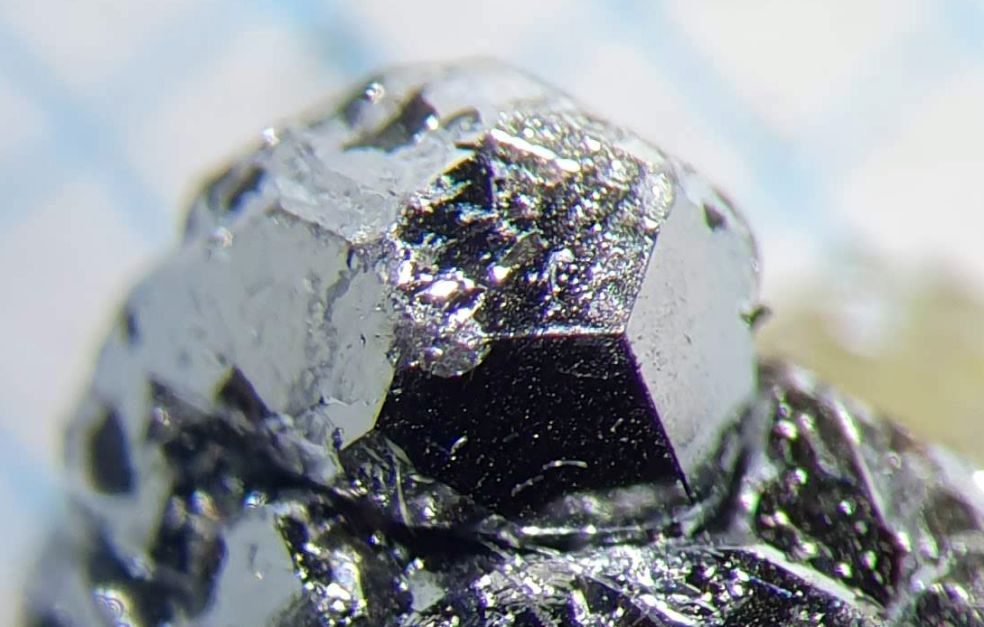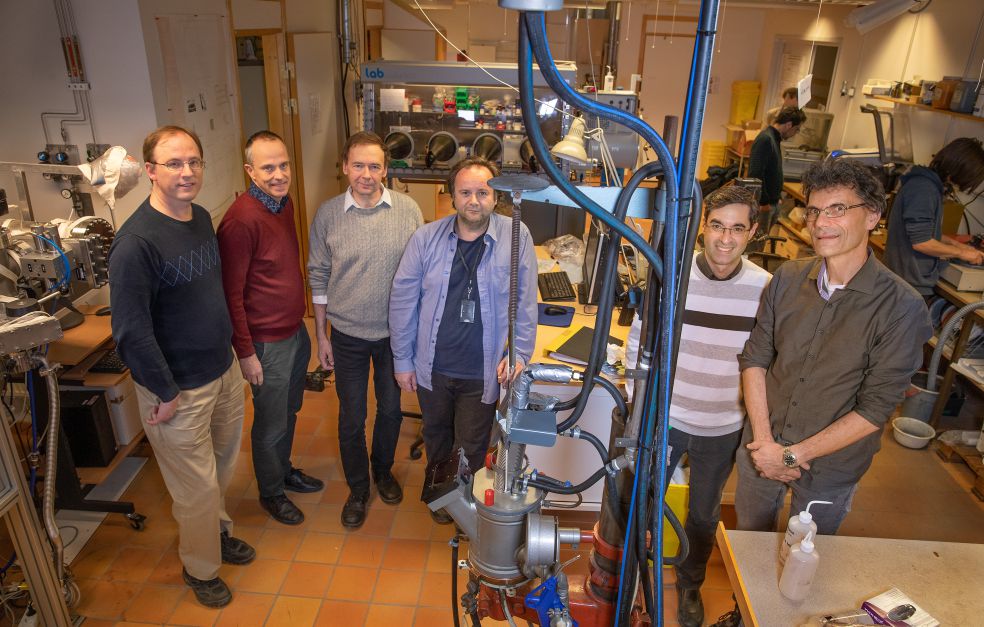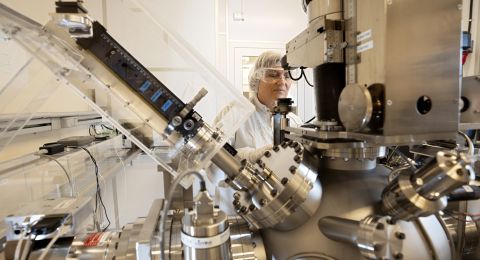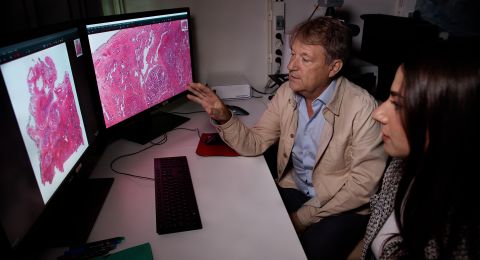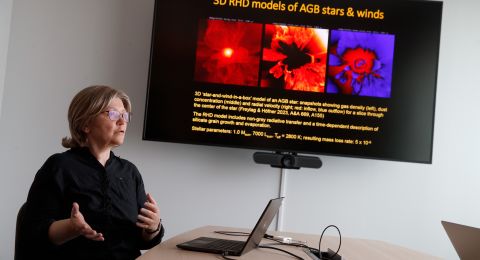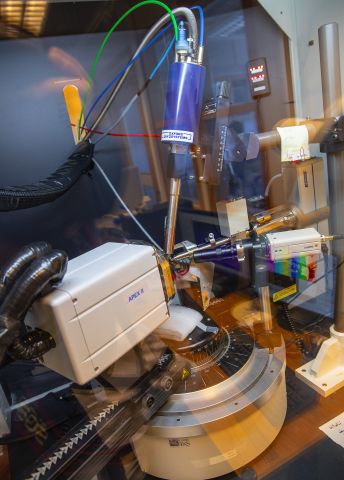
Project Grant 2018
Functional Quasicrystals? – Harnessing the complexity of aperiodic intermetallic compounds
Principal investigator:
Professor Ulrich Häussermann
Co-investigators:
Stockholm University
Andreas Rydh
European Spallation Source (ESS)
Pascale Deen
KTH Royal Institute of Technology
Patrik Henelius
Uppsala University
Peter Lazor
Roland Mathieu
Cesar Pay Gómez
Institution:
Stockholm University
Grant in SEK:
SEK 28.1 million over five years
Over the past few decades researchers have had to fundamentally rethink their view of solid materials. This follows the discovery of quasicrystals in the laboratory by Dan Shechtman, an Israeli scientist, in 1982. The discovery met with widespread skepticism, since it contradicted accepted science. The atomic structure of the crystal was not repeated in periodic patterns, as had been the rule in crystals. On the contrary, the experiment showed that the pattern could not be repeated.
Ulrich Häussermann is a professor at Stockholm University, and one of the researchers involved in a Swedish project entitled “Functional Quasicrystals”.
“At first it was hard to understand how matter can be arranged in such complex structures.”
Guided by Arabian mosaics
It took time to understand the structure of the quasicrystals, but historical knowledge of mathematics and construction engineering provided some clues. A form of tiling known as aperiodic mosaics occurs in medieval Arabian architecture. These are patterns that are regular and abide by mathematical rules but, like quasicrystals, never repeat themselves. Alhambra in Andalusia, Spain is one such example. This serves to remind us that science sometimes reinvents the wheel. Cesar Pay Gómez, an associate professor and researcher at the Ångström Laboratory in Uppsala, elaborates:
“Mathematical models and Arabian mosaics existed long before quasicrystals were discovered.”
The importance of quasicrystals was definitively confirmed in 2011, when Shechtman won the Nobel Prize. His work has helped to open the door to a field in which researchers hope to find properties that can be attributed specifically to quasicrystals.
“We can admire the elegance of the complex structures, but we also wonder whether they possess unique properties as well,” Häussermann comments.
This open question gave birth to an idea for a project that has now become a reality thanks to funding from Knut and Alice Wallenberg Foundation. The project brings together researchers from three Swedish higher education institutions and the European Spallation Source (ESS) research facility in Lund. The team is already the largest of its kind in the world. In particular, the researchers hope to identify magnetic and electronic properties in quasicrystals. Perhaps as yet unknown phenomena are to be found hidden inside quasicrystals, but they may also possess well-known properties that manifest themselves in new and different ways.
Made in the laboratory
Since the early 1980s hundreds of different quasicrystals have been synthesized in laboratories around the world. Most of them are alloys, mixtures of pure metals – usually at least three. A breakthrough occurred around the time of the new millennium, when a binary quasicrystal was produced comprising only two metals: ytterbium and cadmium. This alloy now constitutes the prototype for the largest family of “icosahedral” quasicrystals.
The researchers can use this prototype as a basis for linking various elements together, and creating numerous variations. The project will be synthesizing new quasicrystals using innovative methods, and by combining carefully selected metals. Professor Patrik Henelius at KTH Royal Institute of Technology is an expert on rare earth metals, which are known for their magnetic properties.
“No one has ever seen a long-range magnetic order in a quasicrystal, and if we manage to do so, it would be like finding the Holy Grail in this field of research. It’s an enormous driver for us,” Henelius says.
Experiments inspired by a meteorite
The project is also using nature as a role model. In 2009 the first naturally occurring quasicrystals were discovered in mineral samples from eastern Russia. It has transpired that the rock reached Earth from outer space in a meteorite some 15,000 years ago. This has inspired advanced experiments in which quasicrystals are exposed to pressure equivalent to tens of thousands of atmospheres and very low temperatures. Pay Gómez explains:
“What nature did thousands of years ago, we are trying to recreate in the laboratory using numerous different systems. This is the first time that pressure has been applied to quasicrystals during synthesis.”
This part of the project also contributes to the development of new infrastructure and methodology. Andreas Rydh at Stockholm University will be measuring heat capacity in small samples at extremely low temperatures using a technique allowing very high resolution. Measurements under high pressure are a challenge, and may be of interest to physicists around the world.
“It’s a question of pushing the technology to achieve things that haven’t been done before, offering scope for a new type of experimental measurements.”
Quasicrystals are a field waiting for the next major discovery, and there is a chance that this will be made in the Swedish project. It would be a huge breakthrough to find a new magnetic material.
“Magnetic materials have numerous applications, such as data storage and energy systems. The research may ultimately lead to completely new applications that we can’t even conceive of today,” says Pay Gómez.
Text Nils Johan Tjärnlund
Translation Maxwell Arding
Photo Magnus Bergström

